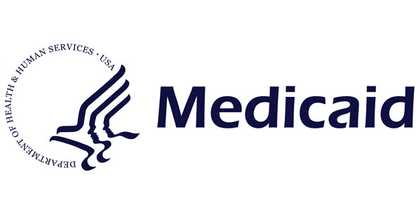If you are asking when dentists need to pull a tooth, the answer depends on factors like infection, structural damage, impaction, and orthodontic needs.








$149 New Patient Special!*
Includes comprehensive exam, full mouth x-rays and a cleaning for new patients without insurance.
Tooth extraction is sometimes the safest, most efficient way to relieve pain, stop infection, and protect long-term oral health. While dentists prioritize preserving natural teeth whenever possible, certain situations make removal the most appropriate or predictable treatment. If you are asking when dentists need to pull a tooth, the answer depends on factors like infection, structural damage, impaction, and orthodontic needs. Dental teams often coordinate extractions and follow-up orthodontic care as part of an integrated approach that supports proper bite function, aligned teeth, and lasting stability so your smile stays healthy and confident. Understanding the reasons behind a tooth getting pulled can help you make informed decisions about your care.
Signs That a Tooth May Need to Be Extracted
Recognizing early warning signs allows you to seek timely care and avoid complications. If you experience any of the following symptoms, schedule a dental evaluation promptly:
- Severe, persistent pain that doesn’t improve with over-the-counter medication or worsens when chewing.
- Swelling, redness, or tenderness in the gums near a tooth, sometimes with a bad taste or discharge.
- Visible damage such as extensive decay, fractures that extend below the gum line, or a tooth that feels loose.
- Lingering temperature sensitivity, which can indicate nerve involvement or deep decay.
- Gum changes, including deep periodontal pockets or recession around a specific tooth, suggesting advanced gum disease.
These signs do not always mean a tooth must be removed, but they do signal the need for an immediate assessment. Your dentist will perform a clinical exam and take X-rays to determine the cause and recommend the best course of action. If you’re wondering when dentists need to pull a tooth, these symptoms often guide the decision-making process. In cases where tooth crowding, shifting, or spacing is also present, coordinated care can align teeth after the underlying issue is addressed.
Common Reasons for Tooth Extraction
Although saving a tooth is the goal, there are circumstances where extraction is the most effective or safest option:
- Impacted teeth (often wisdom teeth): When a tooth is blocked from erupting properly, it can create pain, infection, cysts, or damage to neighboring teeth. Removal helps protect the alignment and health of adjacent teeth and often prevents future problems.
- Infected teeth requiring urgent treatment: Severe infection that does not respond fully to antibiotics or cannot be resolved with root canal therapy may necessitate extraction to stop the spread and protect overall health.
- Non-restorable damage or decay: If a tooth is fractured below the gum line or decay has compromised most of the structure, restoration may not be possible, making removal the predictable choice.
- Advanced periodontal disease: Significant bone loss and gum infection can loosen teeth to the point where extraction is recommended to eliminate ongoing inflammation and discomfort.
- Orthodontic reasons: In carefully selected cases of overcrowding, targeted extractions create needed space for healthy alignment, improved facial balance, and bite correction.
Your dental team will explain why removal is recommended, discuss alternatives, and show how extraction fits into your overall oral health plan. Knowing when dentists need to pull a tooth, and when a tooth getting pulled supports orthodontic goals, can help ensure treatment is timed so tooth movement and bite correction proceed smoothly after healing.
Alternatives to Tooth Extraction
Preserving your natural tooth is typically the first priority. Depending on the diagnosis, your dentist may recommend:
- Root canal therapy: If infection is confined to the tooth’s pulp, cleaning and sealing the canals can eliminate pain and save the tooth.
- Crowns and fillings: When decay or fractures are limited, restorative treatments can rebuild strength, protect remaining structure, and restore function.
- Orthodontic treatments: Strategic tooth movement can address crowding, bite issues, and eruption risks, decreasing the need for extraction in some cases.
- Periodontal therapy: Deep cleaning, localized antibiotics, and ongoing gum care can stabilize teeth affected by gum disease and reduce the risk of future tooth loss.
- Occlusal guards and splints: For teeth damaged by grinding or clenching, protective appliances can reduce wear, alleviate jaw discomfort, and prevent further cracks.
A thorough examination, including radiographs and bite analysis, will help determine whether a tooth can be predictably saved. Understanding the alternatives clarifies when a tooth getting pulled is necessary versus when conservative care can preserve the tooth.
What to Expect During and After a Tooth Extraction
Knowing what happens during and after an extraction can reduce anxiety and promote a smooth recovery:
- During the procedure: Your dentist or oral surgeon will numb the area and gently remove the tooth. For impacted or severely damaged teeth, a surgical extraction may be required. You’ll receive case-specific instructions, and sedation options may be available to keep you comfortable.
- Right after: Bite gently on gauze to control bleeding, follow guidance on pain relief, and keep the area clean. Avoid smoking and limit strenuous activity for the first 24–48 hours to support healing.
- Recovery tips: Use cold compresses to reduce swelling, eat soft foods, and avoid drinking through straws to protect the blood clot. After the first day, rinse with warm salt water as directed to maintain cleanliness. Take prescribed medications exactly as instructed.
- Follow-up care: Contact your dentist promptly if you have persistent bleeding, worsening pain, fever, or signs of infection. If spacing or bite is affected after a tooth getting pulled, schedule an orthodontic consultation to discuss alignment options, timing, and how braces or clear aligners can guide teeth into proper position.
With proper post-operative care and coordinated treatment, most patients recover quickly and can proceed with therapies that maintain spacing, alignment, and bite stability.
Planning Your Next Steps
If you’re wondering when dentists need to pull a tooth, or whether your tooth can be saved, start with a comprehensive evaluation. A clinician will assess symptoms, review X-rays, and explain the benefits and risks of each option. This balanced, step-by-step plan helps protect oral health, supports a comfortable bite, and promotes a confident smile. Asking questions and understanding why a tooth getting pulled may be recommended ensures you feel informed and prepared for treatment.









